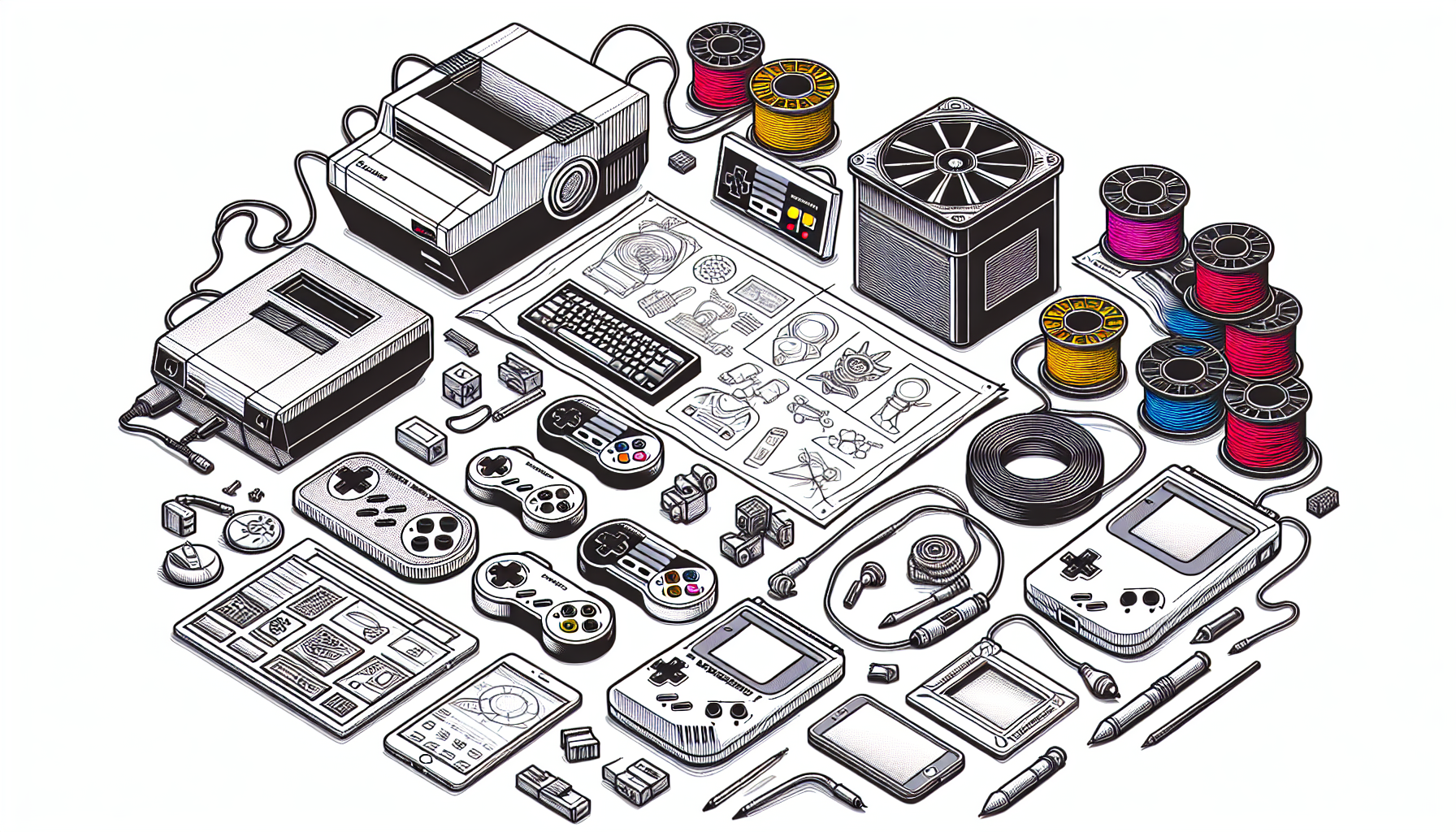3D printing technology has come a long way since its inception, transforming how we create and interact with the physical world. One intriguing trend that has emerged is the melding of nostalgic design with cutting-edge innovation. As vintage gadgets make a comeback through modern 3D printing techniques, it’s essential to explore how communities resonate with these advancements. In this post, we’ll delve into the rise of nostalgic 3D printed gadgets, the community responses surrounding them, and the implications for future tech developments.
The Rise of Nostalgic 3D Printed Gadgets
The allure of nostalgia is powerful, and it’s driven the resurgence of several classic gadgets that consumers want to relive. Think back to childhood memories of playing on classic gaming consoles like the NES or Sega Genesis. Today, enthusiasts are digging through archives to replicate these beloved devices using 3D printing technology. Vintage electronics, such as cassette players, rotary phones, and even classic handheld games, are also being resurrected, drawing both techie hobbyists and nostalgic collectors into the fold.
The beauty of 3D printing lies in its ability to facilitate innovation. Designers and creators are not just replicating these gadgets exactly as they were; they are reimagining them. Imagine a modernized version of a beloved Game Boy, complete with a high-resolution screen and rechargeable battery, while maintaining the original’s aesthetic charm. This intersection of nostalgia and modern design not only provides a sense of connection to the past but advances the way these devices function and appeal to current audiences.
Community Responses and Engagement
Online platforms like Reddit and various social media spaces remain vital in fostering conversations about nostalgic 3D printed gadgets. Communities share their projects, modifications, and versions of iconic devices, sparking dialogues that encourage creativity and collaboration. These discussions help highlight specific instances of success, such as the creation of fully functional retro gaming consoles that are cherished by the gaming community.
Through these interactions, we can observe how DIY culture is thriving. Individuals are not simply consumers but active participants in a movement where they can create, modify, and share their artistic interpretations of technology from yesteryears. Community members often provide tutorials and design files, making it easier for novices to join in. This democratization of creation is transforming the consumer landscape, allowing the preservation of tech history while fostering innovation.
Implications for Future Tech Development
The impact of nostalgia on consumer behavior is profound. As brands recognize the emotive pull of vintage tech, we see a shift in marketing strategies that leverage familiar designs and aesthetics from the past. Nostalgic elements are enticing consumers, but there’s more to it than just fond memories. This trend indicates that what we desire from technology isn’t merely functionality, but also an emotional connection.
Looking ahead, the role of 3D printing in preserving and transforming tech history will likely expand. As more creators enter the field, we can expect to see an even broader array of gadgets, not to mention collaborations between hardware designers and innovators. The technology will continue to push boundaries, enabling more accessible and customizable versions of our cherished devices, thereby securing their legacy well into the future.
The intersection of nostalgia and technology in 3D printing signifies a remarkable balance between preserving history and innovating for the future. As we observe how communities engage with these nostalgic designs—whether it’s through sharing project files on platforms like Thingiverse or showcasing their creations on TikTok—we gain valuable insights into the cultural value these gadgets embody. It’s about more than just recreating beloved designs; it’s a celebration of our shared memories and experiences.
Furthermore, as we anticipate the future, it becomes clear that the innovations sparked by nostalgic adaptations could lead to a renaissance in how we approach technology. By blending old favorites with new functionalities, we’re not just looking back; we’re embracing a forward-thinking perspective that appreciates the significance of our past while paving the way for tomorrow’s advancements. The world of 3D printing is not just a canvas for creativity; it’s a bridge connecting the past, present, and future of technology. The journey of nostalgia in 3D printing not only celebrates our cherished memories but also inspires future innovations that resonate deeply with our emotions.







Leave a Reply